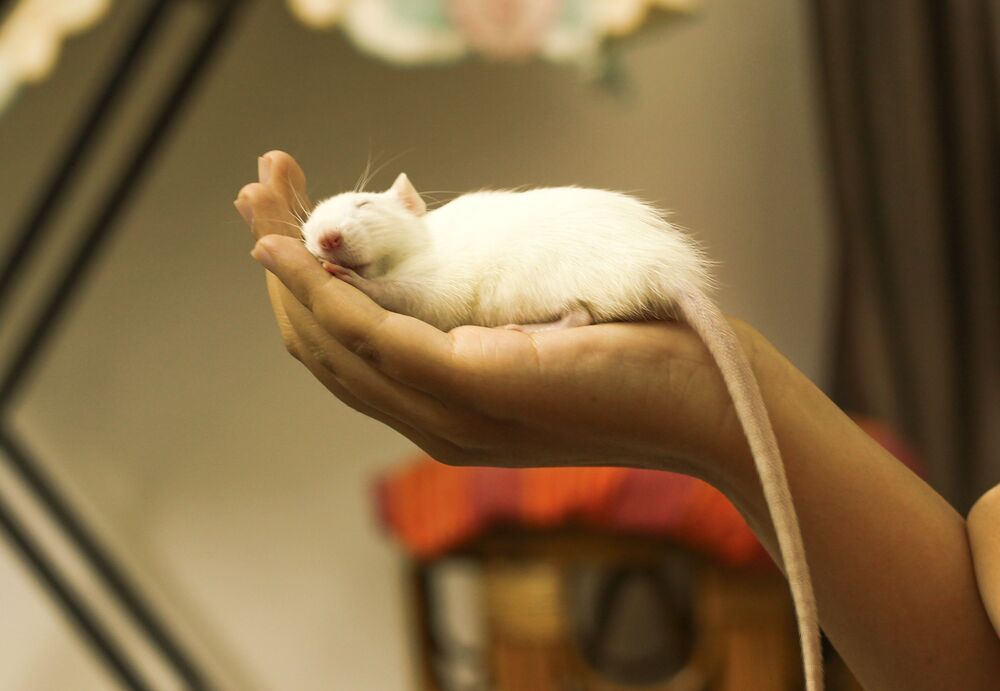With an overboost mode that pumps out a total 640 horses, this EV doesn’t mess around.
Mutations in mink herds and wildlife such as weasels, badgers, ferrets may pose risk to human health and vaccine development.
Some animals, like mice and birds, are able to bring their body temperature and metabolism way down to conserve energy, going into a sleep-like state called torpor. Now researchers have identified the brain cells that trigger this state, showing they can activate it on demand. The team was even able to do it in rats, which don’t normally do it at all, suggesting that such a “suspended animation” state might eventually be possible in humans.
Torpor seems to have evolved as a survival strategy during times of food scarcity, allowing animals to snooze through cold nights or even entire winters without wasting too much energy keeping their body temperature up. That of course allows them to survive until things warm up again, and food becomes more plentiful.
Scientists have toyed with the idea of inducing this kind of hibernation state in humans to reduce the resources and room required for long treks into space. Now researchers at Harvard and the University of Tsukuba in Japan may have made progress towards doing just that.
Scientists have found a planet where it rains rocks, the winds whip faster than the speed of sound and there is an ocean of magma more than 100km deep.
Researchers have found extreme “lava planets” before. They are worlds so close to their host star that the surface is made of oceans of molten lava.
But the newly-analysed planet known as K2-141b is unusual even among those extreme worlds. Its surface, ocean and atmosphere are all made up of rocks, which fall like rain and melt into its huge seas.
SpaceX’s Starlink satellite cluster has been receiving much headline space recently as it continues adding satellites at a breathtaking pace. Much of this news coverage has focused on how it’s impacting amateur skygazers and how it could benefit people in far-flung regions. But technical details do matter, and over on Casey Handmer’s blog, there was a recent discussion of one of the most important aspects of how Starlink actually operates—what will it do with its data?
In networking lingo, data is quantized into “packets,” which are sets of ones and zeros that computers can understand. In the case of Starlink, these packets will bounce between ground stations and a series of satellites parked in nine separate low-Earth orbits. Each orbit will contain a number of satellites, and each satellite’s covered territory will overlap with the satellites to the north and south of it. When the constellation is complete, every spot on Earth will be covered by at least two Starlink satellites.
Future versions of the satellites will use lasers to communicate amongst themselves. But for now, they have to use ground stations to talk to other satellites. Therefore, there will be a great amount of packet passing between satellites, ground stations and end user terminals. The information that describes such a convoluted path for each packet must be stored somewhere. That somewhere is called the “metadata.”
There are many options for living on Mars. 3D-printed ice habitats around the poles, building underground, etc. The technology is finally here.
This is part of the reason why the surface is so cold, ranging from −143 in the polar regions during winter and 35 °C (−226 to 95 °F) near the equator during midday in the summer. But because the air is so thin, a person standing on Mars (in the summer and at noon) would experience extreme cold anywhere above their ankles.
And then there’s the radiation, which is roughly 40 times higher than what humans are regularly exposed to here on Earth (worse, when a solar event occurs). There are also massive dust storms that can envelop the entire planet and block out all sunlight. Last, there’s Martian gravity, which is about 37% of what we experience here on Earth.
In short, Mars is cold, dry, irradiated, and the air is thin and unbreathable. But with the right kind of living strategies and technology, living on Mars could be possible. In particular, life on Mars will rely heavily on 3D printing, in-situ resource utilization (ISRU), renewable energy, radiation shielding, and lots of recycling and compost systems.
The Firenze Lanciare cruises at 500 mph as a jet and can out-accelerate a Lamborghini on the ground. It’s a whole new category of flying car.
A team of researchers from China, Spain, Russia and Portugal has developed a way to use Moiré lattices to optically induce and highlight the formation of optical solitons under different geometrical conditions. In their paper published in the journal Nature Photonics, the group describes their work, which involved using photorefractive nonlinear media as a means of localizing laser light into tight spots.
Solitons are quasiparticles propagated by a traveling wave. Unlike waves such as those produced in water, solitons are neither followed nor preceded by other such waves—they also hold their shape as they move. They are important because they are able to prevent diffraction from occurring, which is why they play such an important role in telecommunications and other information carrier systems. Moiré lattices are patterns that sometimes emerge in printed or scanned images when two patterns overlap one another in an offset fashion. They have been used in graphene-based research efforts and work that involves manipulating very cold atoms. They have also been found to play a roll in the development of colloidal clusters.
In this new work, the researchers were investigating the ways that light could be stopped from spreading—more specifically, ways that laser light could be trapped in a tight spot. To that end, they used a laser beam to stencil a special a type of crystal: a photorefractive strontium barium niobite crystal with nonlinear holographic properties. The stencil forced a beam of laser light to form into a twisted Moiré lattice. As the light moved through the lattice, the researchers found that solitons formed. They also found that they could adjust the threshold of the laser power by fine-tuning the angles of the twists in the lattice. Additionally, the formation of solitons in the lattices occurred with smooth transitions, from fully periodic geometries to aperiodic ones. The researchers also noted that such thresholds in their setup were quite low.
Renault Float hover car
Posted in robotics/AI, transportation
The Float is a concept car by Yunchen Chai. It won the design competition hosted by Renault and Central Saint Martins. The participants of the competition had to design a car that emphasized electric power, autonomous driving, and connected technology.
This car uses Meglev technology, is non-directional, and a magnetic belt to attach multiple pods. The Float would even come with an app. This could be the future of car design.
FACEBOOK: https://www.facebook.com/mashable/
TWITTER: https://twitter.com/mashable
INSTAGRAM: https://www.instagram.com/mashable/
Circa 2015
Audi may just be reaching the point of producing electric vehicles, but an Ohio-based industrial designer has an idea for where they should go after mastering that craft.
Kevin Clarridge of Columbus, Ohio, has shared a few sketches of his design for a wheel-free Audi sedan straight out of the 22nd century. A post to his Facebook page Oct. 8 shared a few images, while his Behance profile shows a few more color options for this concept.









